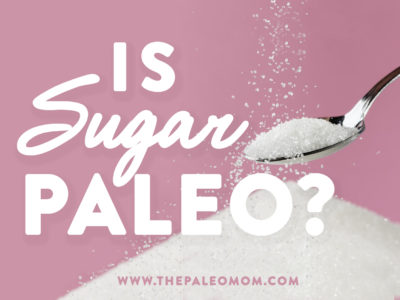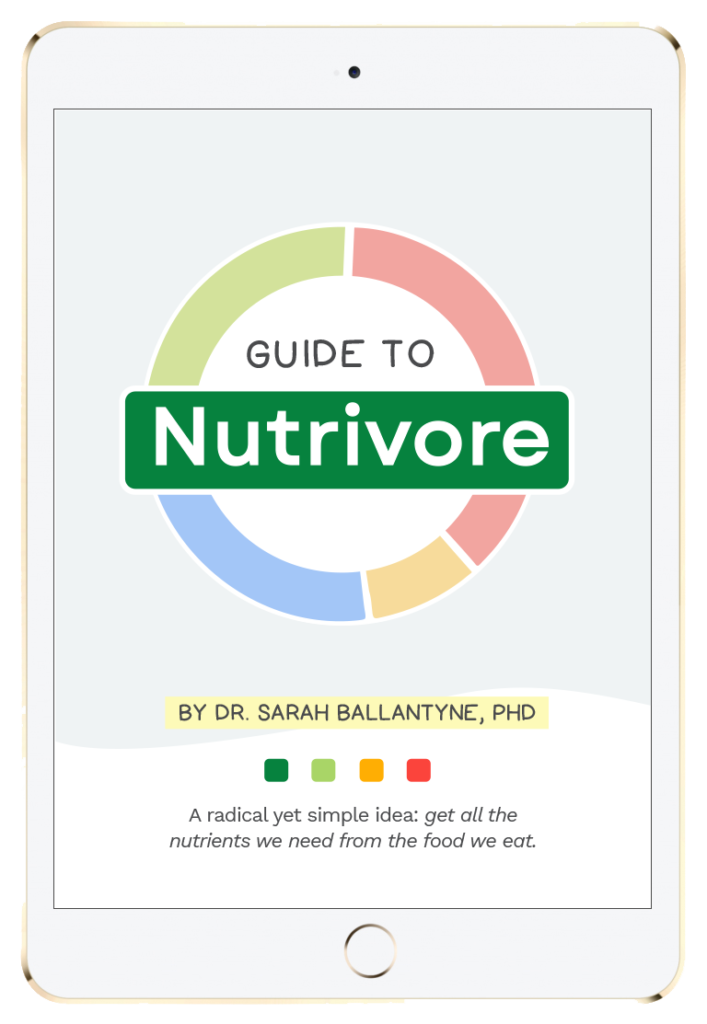One of the most frequent questions I get about my recipes is why do I sometimes use sugar? Aren’t we supposed to be avoiding sugar? Isn’t refined sugar the cause of the Diseases of Civilization? As previously outlined in my post Why Is Sugar Bad?, sugar should not be a staple of our diets. But just like prehistoric man would have made a feast of fruit when it was in season or enjoyed a good dose of honey when it could be found, an occasional sugary treat is okay (depending of course on your personal goals, how far away from those goals you are, and what health issues you are challenged with; see my post How To Cheat and Stay on Track for ideas of how often you might indulge). But the big question here is: when you do allow yourself a Paleo treat, does it matter what it’s sweetened with?
The answer is yes and no. Let’s start with the sugars and sweeteners that I dislike. I am opposed to non-sugar sweeteners (both artificial and natural) for two reasons: 1) some of these sweeteners cause gut irritation; and 2) these sweeteners can cause a spike in insulin which leads to blood sugar crashes because you aren’t consuming glucose which can lead to hormone disregulation and/or sugar cravings (as I explained more in my post Sugar vs. Sweeteners). I am opposed to high fructose content sweeteners, like agave syrup, because the fructose can only be metabolized by the liver, so the amount of toxic byproducts produced is disproportionately high compared to higher glucose content sugars. In addition, high fructose consumption can drastically decrease leptin (the hunger hormone) sensitivity, so your appetite increases. Fiber-based sweeteners like coconut palm sugar, which is predominantly inulin, seem to be a good solution for many people since the glycemic index is very low. However, these concentrated sources of soluble fibers can irritate the gut and contribute to Small Intestinal Bacterial Overgrowth, especially in larger doses. Just like sucrose, natural sources of these fibers (like fruit and vegetables) provide health benefits but once you concentrate it and start consuming larger quantities, health issues occur (but, I do think coconut palm sugar is okay in small doses if you have a very healthy gut).
So what sugars are left that are okay for occasional consumption? Really, this just leaves glucose or a mix of 50% glucose and 50% fructose (like what sucrose, a.k.a. sugar, is made of). We can take our cues from nature: most fruit contains approximately half glucose and half fructose. This half and half mix of fructose and glucose seems to be a pretty happy medium that doesn’t cause too much stress on the pancreas or the liver or produce too many toxic byproducts, as long as the amount we are eating is relatively low (if you really really want me to quantify this, I would suggest limiting the carbohydrate grams of any special treat to 15-30g). This ability of the body to handle a small dose of sugar is especially true when the sugar source in question contains insoluble fiber (which is why fresh fruit is a great choice for a Paleo dessert). I will talk about the merits of using dates or other dried fruit as a sugar source for baking in a future post.
But there are choices when it comes to sugar: from raw honey to sucanat to refined white table sugar. Which is better? The answer is that there really isn’t much to differentiate them. You get some beneficial trace minerals when you use sucanat, molasses, muscovado sugar, honey and maple syrup (I emphasize the word “trace” since the contribution to the mineral content of whatever you are baking is so small; and, we’ve already discussed the importance of keeping the amount you consume low). Raw honey is reported to have a variety of additional health benefits. But when we compare the glucose and fructose content and the glycemic index (which reflects the glucose content but also how easy that glucose is to absorb), there isn’t a whole lot of difference, and only a slight benefit to expensive unrefined sugars:
|
Saccharide Content
|
||||||
|
% Fructose
|
% Glucose
|
% Sucrose
|
% Other
|
Glycemic Index
|
Vitamin/Mineral Content
|
|
|
White Sugar
|
0
|
0
|
100
|
0
|
65
|
none
|
|
Brown Sugar
|
1
|
1
|
97
|
1
|
65
|
none
|
|
Raw Honey
|
45
|
35
|
1
|
14
|
50 (varies)
|
Vitamin A, B1, B6, B12, C, D, E, Folic Acid, Calcium, Sodium, Phosphorus, Magnesium, Silicon, Iron, Manganese, Copper
|
|
Maple Syrup
|
1
|
4
|
95
|
0
|
55
|
Manganese, Zinc
|
|
Molasses
|
23
|
21
|
53
|
3
|
55
|
Vitamin A, Vitamin B (B1, B2, B3, B5, B6), Calcium, Iron, Magnesium, Zinc, Copper, Chromium, Phosphorus, Manganese, Sodium, Potassium, Selenium
|
|
Sucanat
(Evaporated Cane Juice)
Muscovado/Barbados
Sugar
|
2
|
2
|
88
|
8
|
55
|
Vitamin A, Vitamin B (B1, B2, B3, B5, B6), Calcium, Iron, Magnesium, Zinc, Copper, Chromium, Phosphorus, Manganese, Sodium, Potassium
|
|
Turbinado Sugar
(Raw sugar)
|
1
|
1
|
97
|
1
|
65
|
negligible
|
Note: This table is compiled from a few dozen sources and the data presented are averages. Since some of these sugars contain varying amounts of the different saccharides depending on exactly where and how they are produced, the numbers may not reflect the version that you have purchased. Honey is especially variable in its glucose and fructose content.
I believe that if you are going to have a sweet treat, then just use sugar, whichever of the above forms of sugar you prefer for taste, for mineral content, or for price. This is why I sometimes use plain old brown sugar in my recipes (sure, I give up those trace vitamins and minerals but I also save a ton of money). Go ahead and swap it out for sucanat or muscovado sugar if you prefer. You would be making a small improvement in terms of mineral content and glycemic index. But given how similar these sugars are chemically, the most important factor isn’t which one you choose, but how much of it you consume.






 Paleo Granola
Paleo Granola